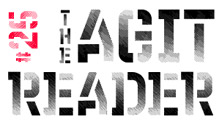
No More, No Less
Mercury/Collector’s Choice
Youngstown, Ohio’s Blue Ash is the perfect example of why the concept of a re-issue shouldn’t automatically be synonymous with the word “classic” or “lost treasure.” The group’s 1973 debut No More, No Less is aptly titled enough. As a relic from that era it’s exactly what one would expect from a band “almost famous,” aping the Beatles and the Who—nothing more than melodic pomp with power-pop tendencies, nothing less than above-average ‘70s excess that defined the dawn of arena rock. Much of the ballyhoo that accompanies this re-release of No More, No Less is based on the song “Abracadabra (Have You Seen Her),” a near-hit that does in fact rank among the finest power-pop blueprints with superiors like Big Star, Cheap Trick and the Raspberries. After that, there’s really not a whole lot that would keep them in those ranks, and judging from the rest of the album, the band’s identity crisis kept them from reaching the celebrity they seemed to have desired.
What’s most intriguing about Blue Ash is their regional flare. Coming out of the depressed rust-belt, the band likely gigging between Cleveland and Pittsburgh regularly, No More, No Less fluctuates between this innocent Beatles/Who complex, most notably on the British Invasion influenced cuts “Plain to See” and “Let There Be Rock,” and a penchant for Southern-styled soloing that recalls the Allmans’ yogurt moments. Slight accents and bellbottoms are an odd mix, especially on “Wasting My Time,” peculiar in its Kinks-ish pop mannerisms, but bogged in Bill Bartolin’s twanged noodling. I guess with stars in their eyes, it was hard to make a decision on what kind of band they wanted to be. Sometimes the hodgepodge works well; “Smash My Guitar” and “Dusty Old Playground” are perfect Midwestern takes on Quadrophenia, amped up and harmonized as if Daltry and Townsend were gods among men (in some circles they are). Flattery, though, will get you nowhere, and with a lack of original ideas, No More, No Less sounds more like a cover album than something that needs digging up.
The story of Blue Ash doesn’t end there, though. They did go on to record a follow-up for short-lived Playboy Records and by all accounts it was a more grand affair, adding horns and strings to their already convoluted version of classic rock. After that, the only member that continued on the quest was bassist Frank Seich who went on to play with the Dead Boys Stiv Bators in various groups. In retrospect, Blue Ash’s one triumph is deserving of the re-issue treatment, but to try and change history by lobbying this as something that may have changed the face of the times had it been heard by more people is futile.
Kevin J. Elliott
PAST PERFECTS
New Order, The Collector's Editions
Kevin Ayers, What More Can I Say?
The Clash, Live at Shea Stadium
U2, Under a Blood Red Sky
Creedence Clearwater Revival, The 40th Anniversary Editions
Suicidal Tendencies, Suicidal Tendencies
Portastatic, Some Small History
Tom Verlaine, Dreamtime and Words from the Front
Wee, You Can Fly on My Aeroplane
Licorice Roots, Melodeon
Another State of Mind
Delicious Vinyl All-Stars, Rmxxology
Felt, Crumbling the Antiseptic Beauty
Siltbreeze's Tard & Further'd
